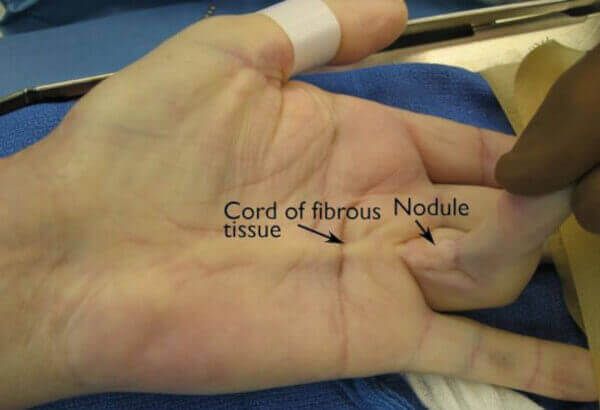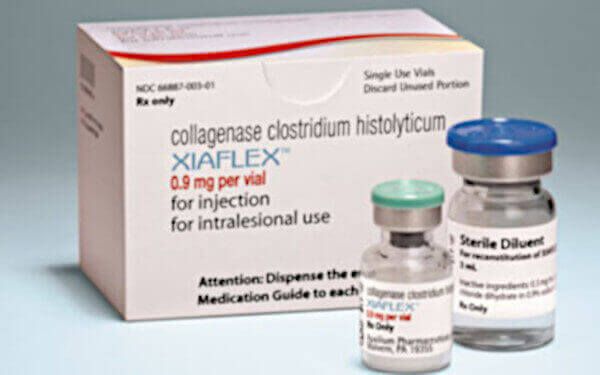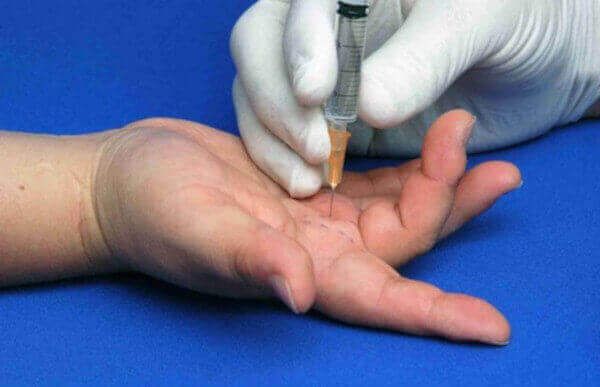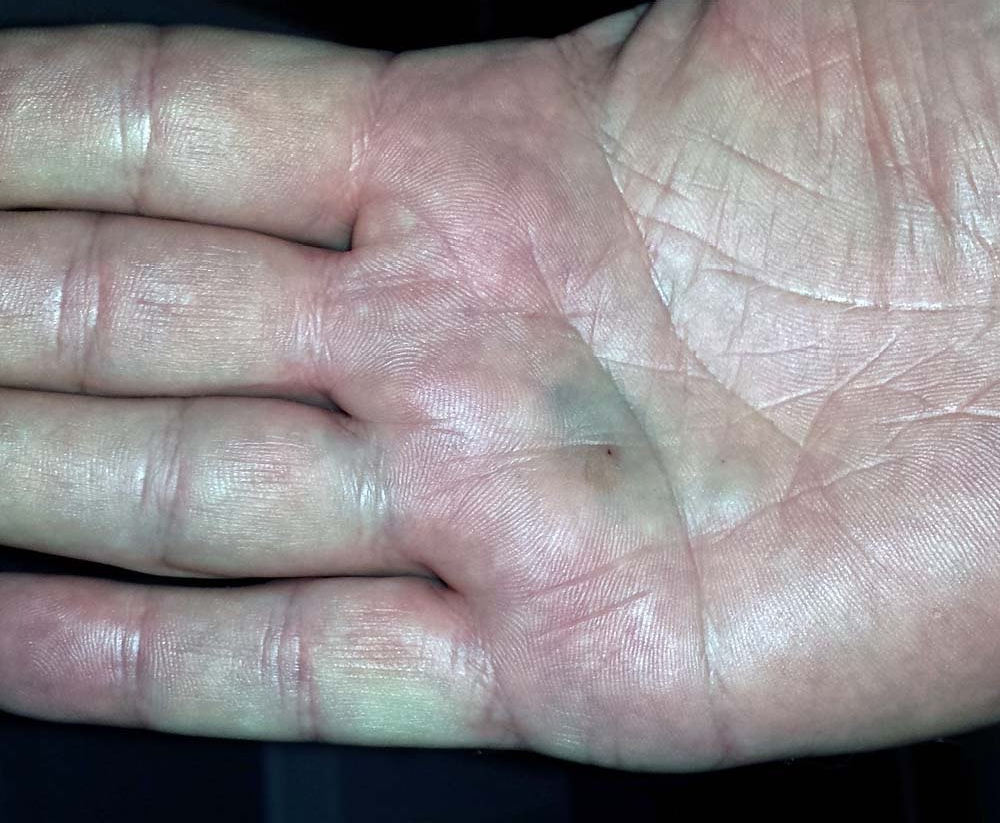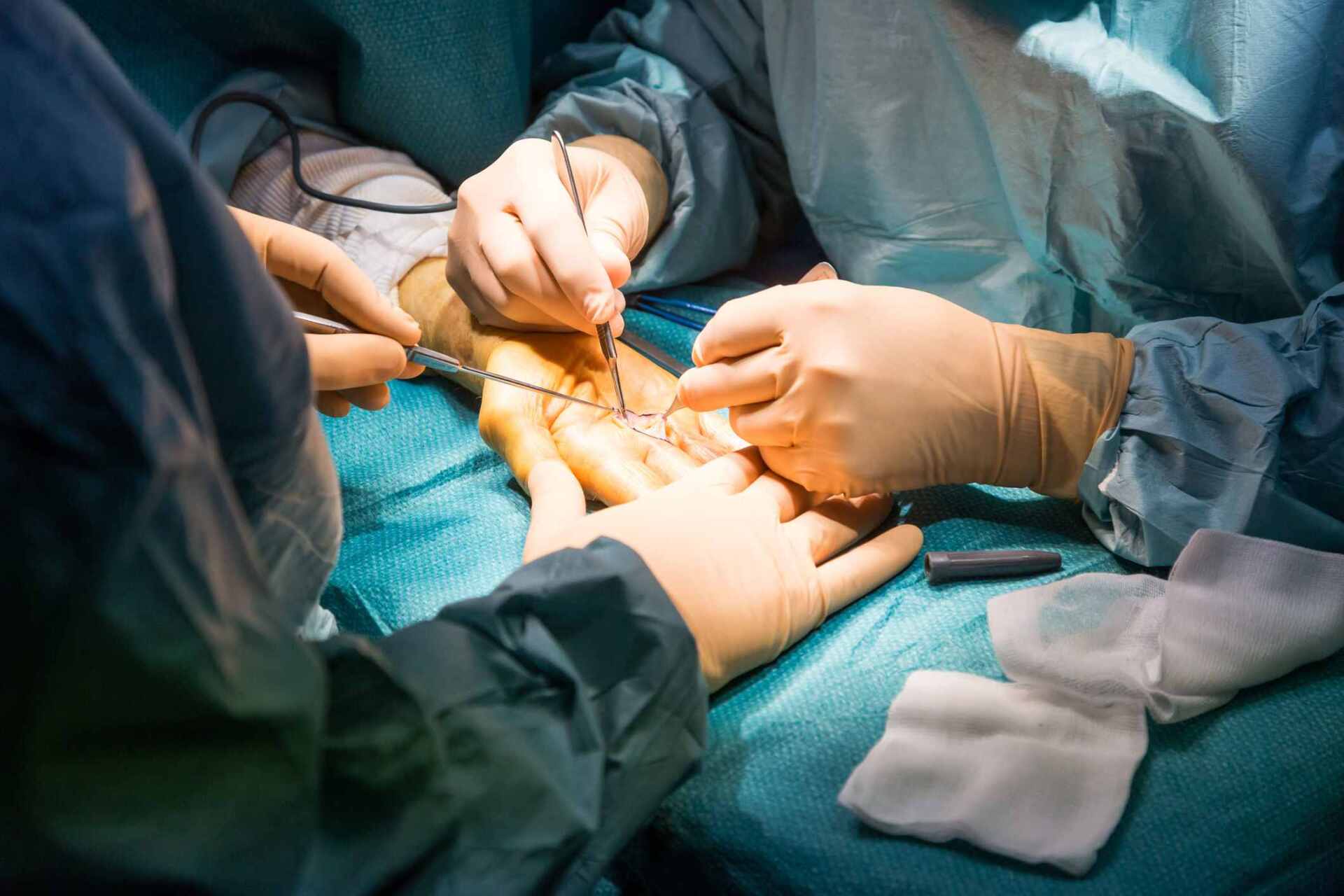Guide to Treatment for Dupuytren’s Contracture
From Dr. Z - Carpal tunnel syndrome specialist
Treatment for Dupuytren’s Contracture
Even though there are good treatments for Dupuytren’s Contracture, you can't technically "cure" it. That's because it’s a disorder with no cure.
However, Dupuytren’s Contracture treatments can be so effective that the problem doesn’t bother you anymore. In fact, most times the hand is restored to normal again.
An update to this report is published on 6 May 2022 regarding a promising experimental drug. See details about using
adalimumab below.
- FIND OUT: do you have carpal tunnel? No strings attached self-test.
What is Dupuytren’s contracture?
A recent Washington Post article says Dupuytren's Contracture is "the most common crippling hand condition’ you’ve never heard of." Unless you have it, you probably don't know what it is.
Dupuytren’s Contracture (doctors also call it Dupuytren’s disease or Dupuytren’s tenosynovitis) is an abnormal condition of the hand. It was first described by Baron Guillaume Dupuytren , a French anatomist and army surgeon. Dr. Dupuytren gained fame from treating Napoleon Bonaparte's hemorrhoids. But today, he’s best known for his namesake condition.
Treatment for Dupuytren's Contracture was developed after years of research. It affects about 5% of the adult population in the United States. It’s more prominent in men over 50 years old. Also, Caucasians are most likely to be affected, specifically those of northern European descent. It’s not very common to find this condition in people of Asian or African heritage.
Do you have these symptoms?
- Usually the cords and nodules eventually grow in size. But it’s important to understand they are not cancerous.
- With more time, a Dupuytren’s patient cannot straighten the affected finger or fingers. In fact, just pressing the palm side of the hand flat on a table is difficult or even impossible.
- Most people with Dupuytren's Contracture cannot easily put their hands in their pockets. They also have a hard time grasping large items.
- Even though you can't cure Dupuytren’s Contracture, luckily it's normally not painful. But you may feel itching or aching in the palm.
- Most cases involve the ring finger. But it may occur in the pinky and middle fingers as well.
Risk factors
- a family member with the disease
- smoking
- alcoholism
- thyroid or liver disease
- diabetes
- epilepsy
- previous hand injury
The Xiaflex treatment for Dupuytren’s Contracture?
How Xiaflex is used
Xiaflex is a 2-step treatment for Dupuytren’s Contracture. It involves the following:
- First, the doctor injects Xiaflex into a particular cord or node in the palm.
- On the following day, the patient gets another injection of an anesthetic agent. This numbs the area. Then the doctor stretches the affected finger. The doctor stretches the finger so much that the cord breaks up.
The injection and stretching process may need to be repeated again in four weeks. If necessary, the doctor can do this up to 3 times per cord at 4 week intervals
After a few years of use around the world, Xiaflex results show that it’s as good as having surgery. In most cases, it's better. Also, recovery time and physical therapy are not nearly as long as surgery.
Unfortunately, since the drug is still relatively new, no one is certain what the re-occurrence rate is yet. Also, no one is certain what the long term effects may be, if any exist.
Problems with Xiaflex
- Some people may be allergic to Xiaflex. Severe allergies to the drug can be potentially dangerous.
- Other patients may experience severe side effects. These include swelling, bruising, bleeding, and tenderness or pain at the injection site. After Xiaflex injections, some patients may even develop symptoms of carpal tunnel syndrome.
- While Xiaflex works in most patients, there are some who see no results whatsoever from the treatment. In other words, the treatment failed.
Alternatives to Xiaflex
If Xiaflex fails, you can try another treatment for Dupuytren’s Contracture. The treatment options available are:
- New research with an arthritis drug
- Steroid injections
- Needle fasciotomy
- Surgery
New research with an arthritis drug
New research with an experimental drug was reported on 29 April 2022 as the next best treatment for Dupuytren's contracture. The drug adalimumab has actually been around for many years to treat rheumatoid arthritis. But now it shows tremendous promise for Dupuytren's contracture.
Doctors report that one injection of the drug into the hand every 3 months for a year softens and reduces nodule size. The effects last up to 9 months later. As a result, the hand normalizes. But if the nodules return, the patient may need another course of injections.
Furthermore, adalimumab injections are most effective in patients with early-stage Dupuytren's disease. No results were reported in patients with a longer-term of the disease. Note: this treatment is still experimental as of this writing.
Steroid injections for Dupuytren’s Contracture
Needle fasciotomy
Surgery
- Subtotal palmar fasciectomy is when the doctor uses a local anesthetic to numb your hand. Then the doctor opens the skin over the affected finger’s tendon. The doctor divides the thickened cord several times. But the tissue is not removed. Dividing it can lessen the contracture. It can also allow the affected finger to move better.
- After the operation the doctor leaves the incision open so it can heal gradually. A hand splint is needed during the entire recovery period.
- In this operation the doctor makes an incision, as in a fasciotomy. But this time the doctor removes enough abnormal tissue (and even the cord) to straighten the finger.
- In some cases, the surgical site is left open to gradually heal on its own. But in other cases, the patient may need a skin graft. The graft will be taken from healthy skin somewhere else on your body such as the buttock or inner thigh. A splint is usually worn afterward, and during much of the recovery period.
- This operation is more extensive than a fasciotomy. It requires more wound care and more extensive rehabilitation. Accordingly, it requires more extensive patient effort during therapy because the healing time is much longer.


